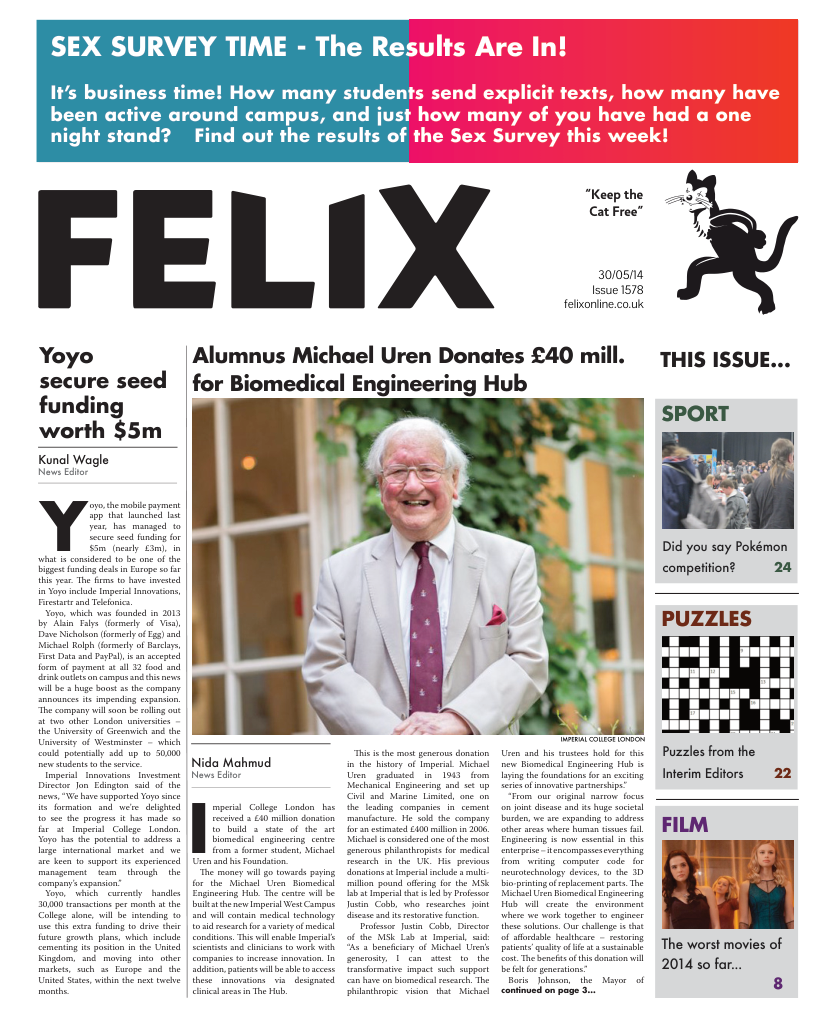Professor Pendry Shares $1mill. Prize
Imperial physicist Sir John Pendry was this week announced as joint winner of the $1 Million Kavli prize for his groundbreaking work in optics. Pendry is most famous as the inventor of the world’s first working invisibility cloak, a product of his work on meta materials.
Imperial physicist Sir John Pendry was this week announced as joint winner of the $1 Million Kavli prize for his groundbreaking work in optics. Pendry is most famous as the inventor of the world’s first working invisibility cloak, a product of his work on meta materials.
Meta materials are unique in having a negative refractive index. The refractive index of a piece of glass is the Sine of the angle of a ray of light going into the glass divided by the Sine of its angle going out, telling you how much the glass bends light. A negative refractive index is then a very strange thing indeed, where the angle of incidence is greater than the angle of refraction, allowing light to be bent in very precise ways. In the case of Pendry’s invisibility cloak, light rays are bent around the material, recombining when they leave as if they were travelling in a straight line the whole time, leaving the material invisible to a distant observer.
Another Imperial physicist, Martin McCall, extended this to the idea of a SpaceTime invisibility cloak, obscuring events. Unlike Pendry’s, this hasn’t actually been made. The Pendry cloak currently only works at microwave frequencies but work is underway to extend it to visible light. Sir Pendry is also known for his theoretical work in predicting a perfect lens, which he demonstrated with a 4 page paper in 2000. The paper was so short that many refused to believe he could have demonstrated such a revolutionary idea, securing his place as one of the greatest physicists in the country. He shares the prize with two other scientists and will be awarded it at a special ceremony by the king of Norway. Sir Keith O’Nions last week called Pendry “one of the great Imperial scientists of all time”.






